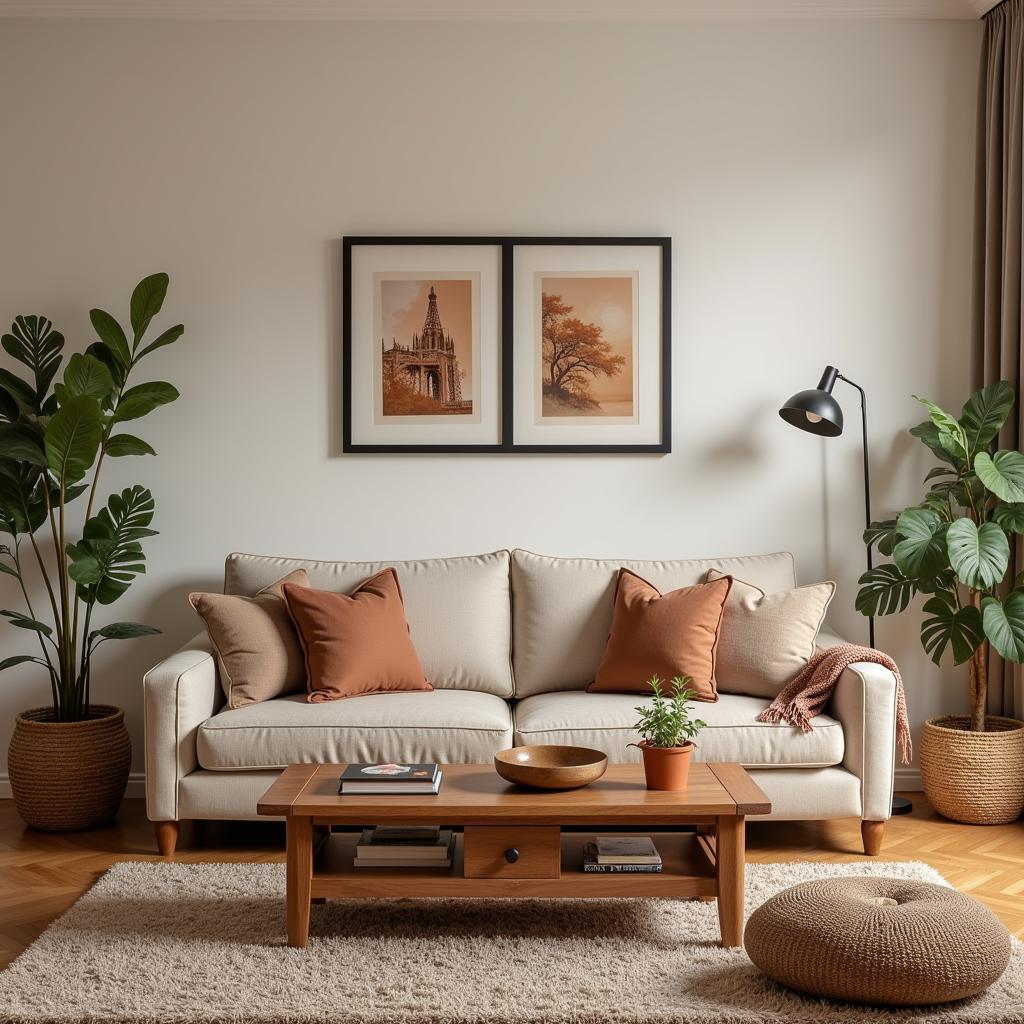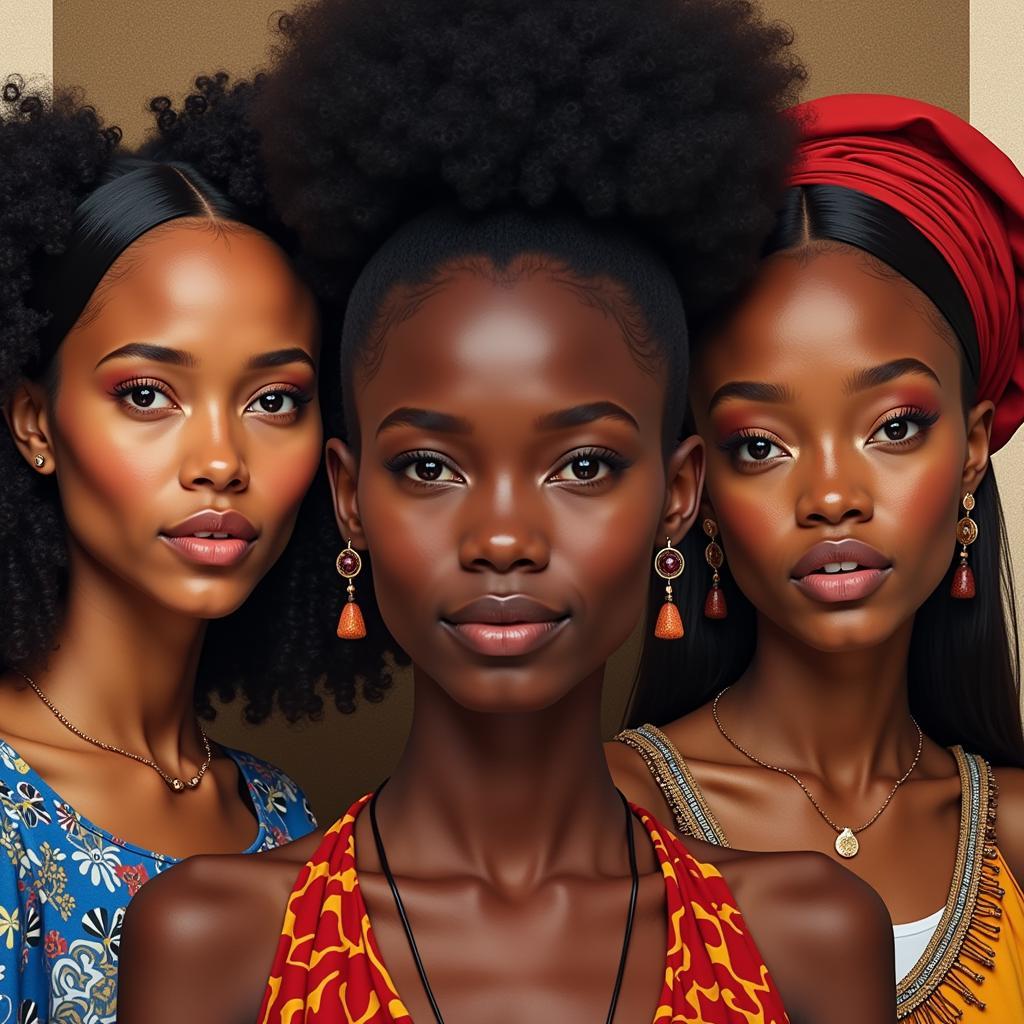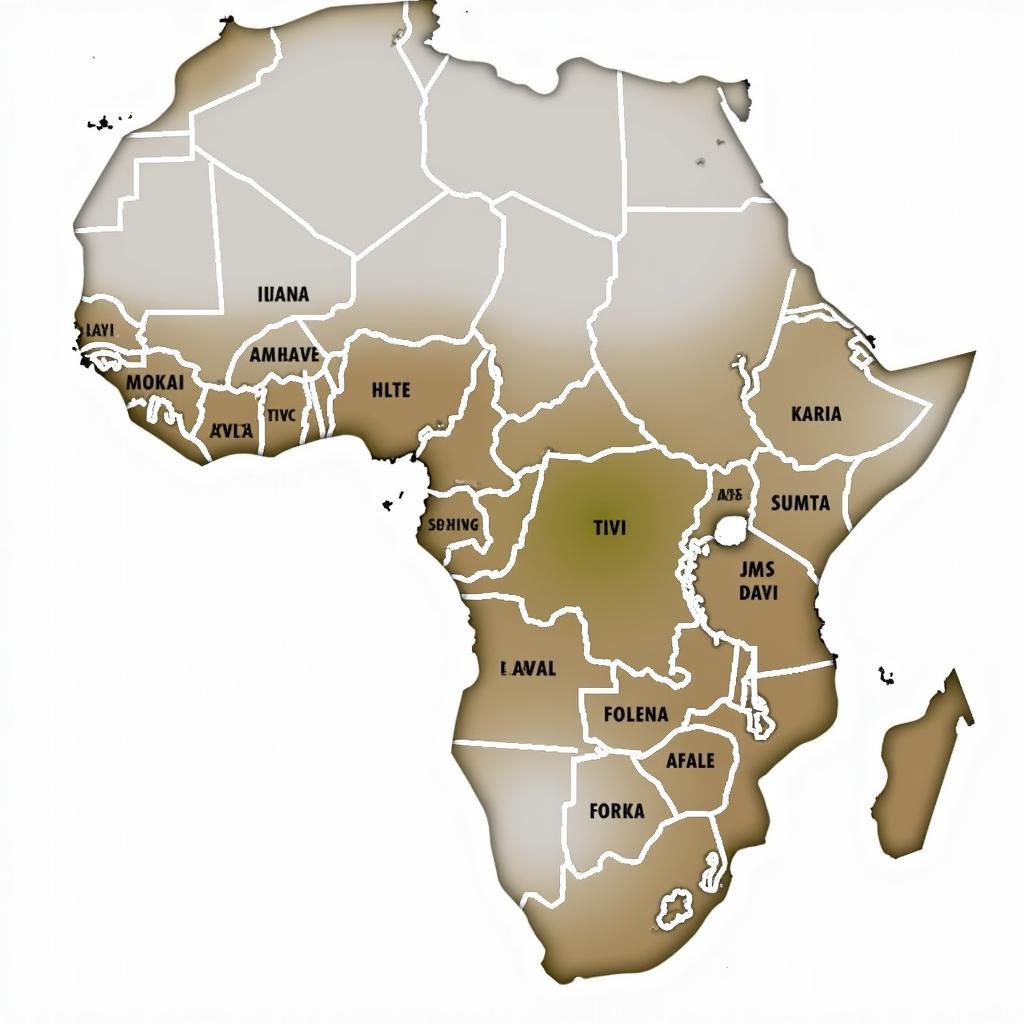African Bladed Weapons: More Than Just Blades
African Bladed Weapons are much more than tools of warfare. They represent a rich history of craftsmanship, cultural significance, and artistic expression unique to the continent. From the sweeping curves of a Maasai simi to the intricate details of a Tuareg takouba, these weapons offer a fascinating glimpse into the diverse cultures and traditions of Africa.
A Legacy of Functionality and Symbolism
For centuries, African bladed weapons have served dual purposes: practical tools for hunting, defense, and warfare, and powerful symbols of status, power, and spirituality. These weapons were often passed down through generations, their value increasing with each successive owner. They became imbued with the history of their wielders, serving as tangible links to a family’s or tribe’s past.
While the functional aspect of these weapons remains undeniable, their symbolic meaning often overshadows their practical use. Many African cultures incorporated bladed weapons into ceremonies, rituals, and dances. For example, among the Zulu people, the assegai spear wasn’t just a weapon but also a symbol of manhood and bravery.
A Diverse Arsenal: Exploring the Types of African Bladed Weapons
The African continent is home to a vast array of bladed weapons, each with its own unique design, history, and cultural significance. Let’s delve into some of the most notable examples:
Swords:
- Takouba (Tuareg people): Known for its distinctive cross-shaped hilt and double-edged blade, the takouba is a symbol of status and power among the Tuareg people of the Sahara.
- Kaskara (Nubian people): With its straight, double-edged blade and distinctive handle, often made from ivory or rhinoceros horn, the kaskara reflects the rich history of the Nubian people.
- Shotel (ancient Ethiopia): This ancient sword features a distinctive curved blade, ideal for circumventing shields and delivering devastating blows in close combat.
Daggers:
- Billao (Fula people): This iconic West African dagger, characterized by its throwing knife-like blade and intricately decorated sheath, represents prestige and social standing among the Fula people.
- Kongo (Yoruba people): This short sword, with its heavy, double-edged blade and often elaborately decorated hilt, plays a vital role in Yoruba rituals and ceremonies.
Spears and Other Weapons:
- Assegai (Zulu people): The iconic short spear of the Zulu people, renowned for its effectiveness in close combat, embodies the warrior ethos of this Southern African tribe.
- Ikul (Turkana people): This distinctive club, often featuring a disc-shaped head and elongated handle, serves both as a weapon and a symbol of authority among the Turkana people of East Africa.
African Bladed Weapons: A Legacy Endures
African bladed weapons offer a captivating window into the diverse cultures and histories of the continent. Beyond their functional roles as tools of hunting and warfare, these weapons hold profound cultural and spiritual significance. Today, they are prized by collectors and museums worldwide, serving as tangible reminders of Africa’s rich heritage.
By understanding the stories behind these weapons, we gain a deeper appreciation for the artistry, craftsmanship, and cultural traditions of the people who created and wielded them.
Frequently Asked Questions:
1. What are some of the most common materials used to make African bladed weapons?
Many African bladed weapons were crafted from readily available materials like iron, copper, and wood. However, some cultures, like the Zulu, developed advanced techniques for smelting iron, allowing them to create stronger and more durable weapons. Handles and sheaths were often crafted from wood, leather, ivory, or animal horns and decorated with intricate carvings, beads, or metalwork.
2. Are African bladed weapons still made today?
While the traditional use of these weapons has diminished, the craft of creating them has not disappeared entirely. Today, skilled artisans in various parts of Africa continue to produce these weapons, often for ceremonial purposes, the tourist trade, or as a way to preserve their cultural heritage.
3. Where can I see examples of African bladed weapons?
Many museums around the world have collections of African art and artifacts, including bladed weapons. Some notable institutions include the British Museum in London, the Metropolitan Museum of Art in New York City, and the Musée Quai Branly – Jacques Chirac in Paris.
4. What is the significance of the decorations on African bladed weapons?
Decorations on African bladed weapons often hold symbolic meaning. Geometric patterns, animal motifs, and figures can represent clan lineages, spiritual beliefs, or the status of the weapon’s owner.
5. Are there any rituals or ceremonies associated with African bladed weapons?
Yes, many African cultures incorporated bladed weapons into their rituals and ceremonies. For instance, young men coming of age might receive a spear or a dagger as a symbol of their transition into adulthood.
Need More Information?
For further exploration of this fascinating subject, you might find these topics interesting:
- African tribal art and symbolism
- The history of ironworking in Africa
- Traditional African warfare and weaponry
If you need support, don’t hesitate to contact us. Phone Number: +255768904061, Email: kaka.mag@gmail.com Or visit us at: Mbarali DC Mawindi, Kangaga, Tanzania. Our customer support team is available 24/7.


